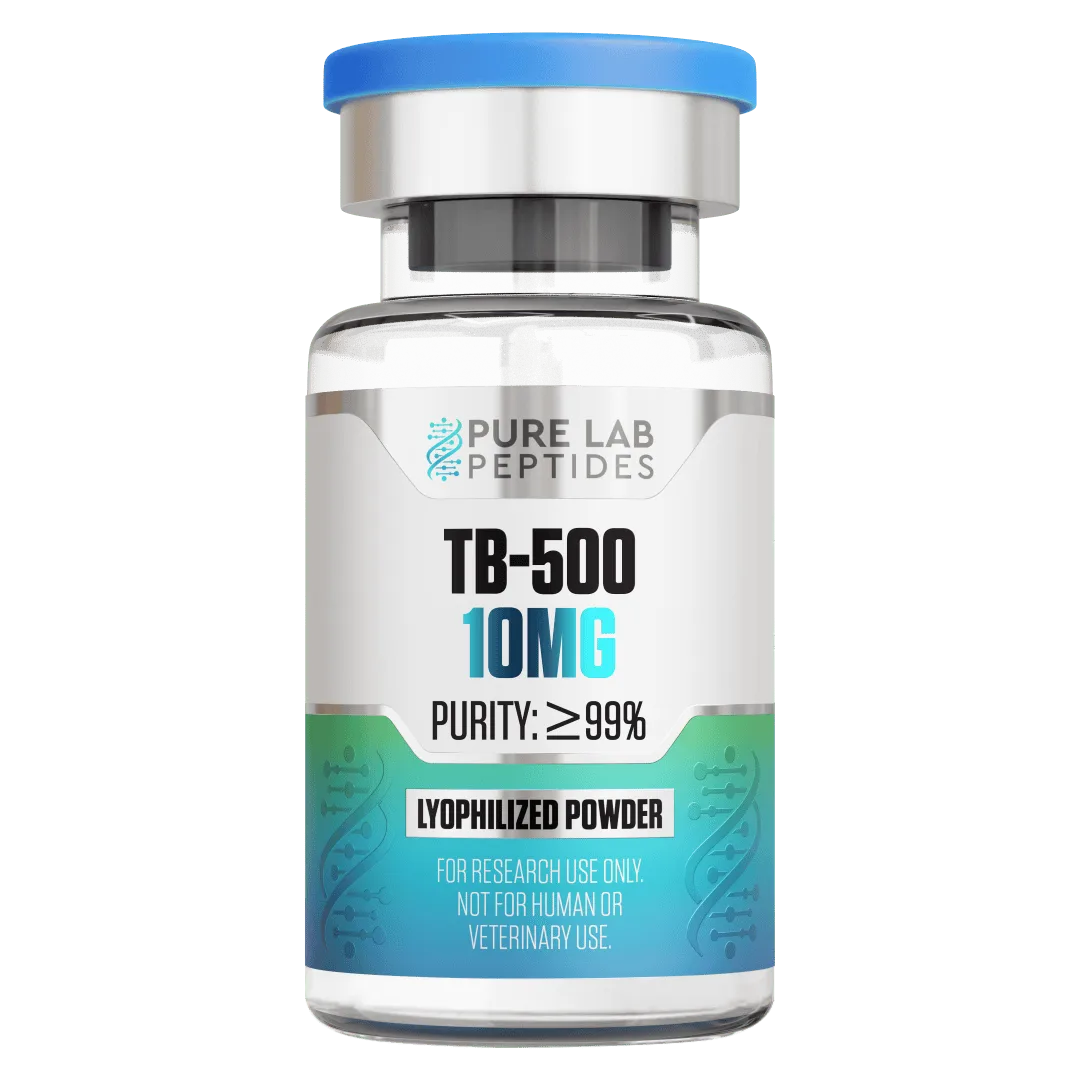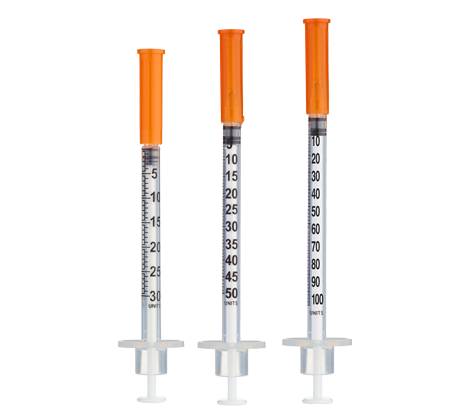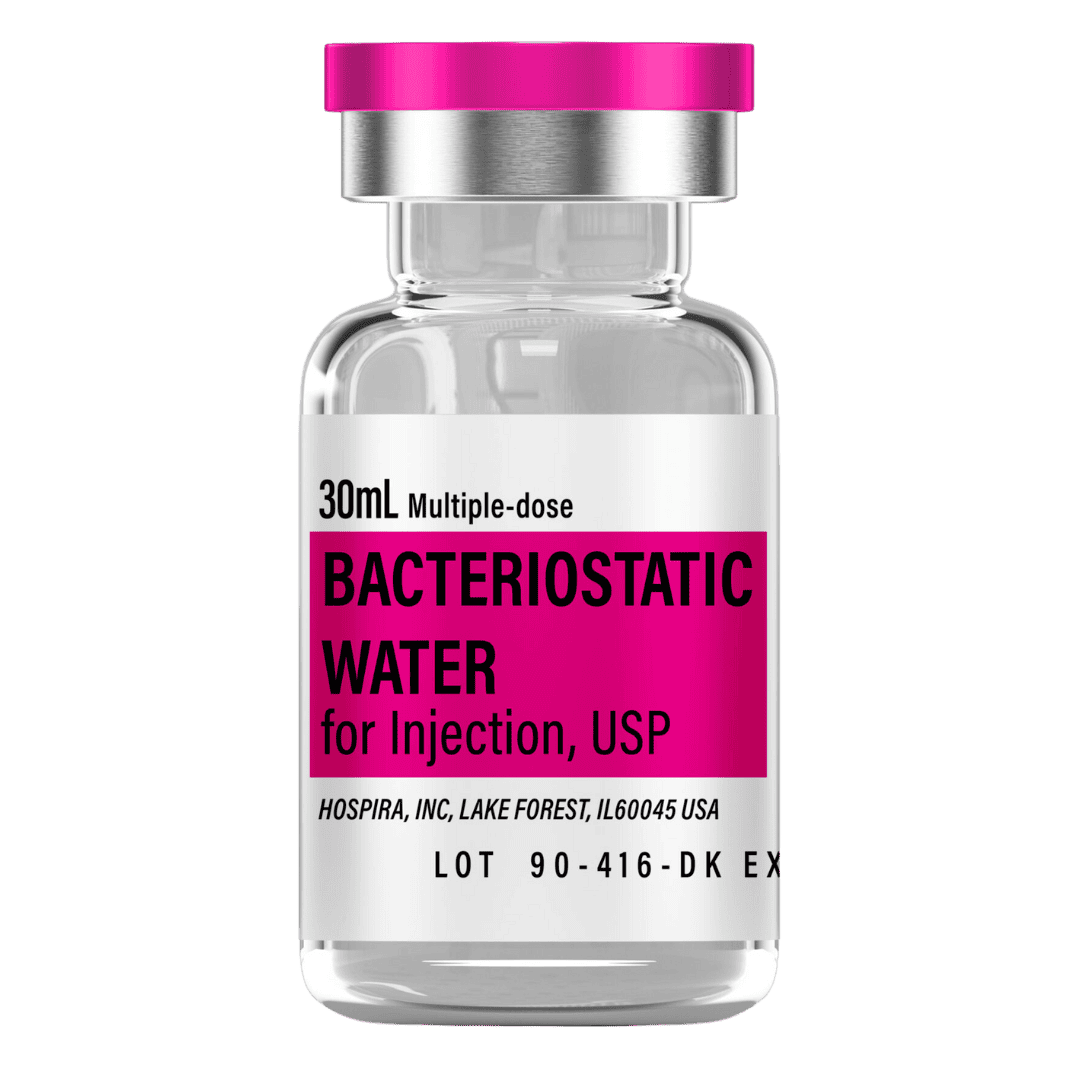TB-500 (10mg Vial) Dosage Protocol
Quickstart Highlights
TB-500 10mg dosage protocol emphasizes tissue repair and injury management via subcutaneous injections in either a loading phase or ongoing maintenance regimen.
- Common weekly totals range from 2.5mg to 5mg, split into multiple injections
- Loading phases typically last 4–6 weeks before shifting to a maintenance schedule
- Reconstitute to a practical concentration (e.g., 2mL total) for accurate dosing
- Store lyophilized vials in the freezer; reconstituted at 2–8°C
- Subcutaneous administration is standard—rotate injection sites to minimize irritation

Dosing & Reconstitution Guide
Educational guide for reconstitution and dosing protocol
Standard / Gradual Approach (2 mL = 5 mg/mL)
| Phase | Weekly Dosage (mg) | Units (per injection) |
|---|---|---|
| Weeks 1–4 (Loading) | 5 mg total per week (2.5 mg x 2) |
50 units (0.5 mL) twice weekly |
| Weeks 5–6 (Optional) | Continue 5 mg weekly if needed |
Same as above |
| Maintenance | 5 mg monthly (one injection) |
100 units (1.0 mL) |
This approach addresses acute injuries or recovery goals over 4–6 weeks, then shifts to monthly maintenance. Reconstituting 10mg with 2 mL yields 5 mg/mL.
- Draw 2.0 mL of bacteriostatic water.
- Inject water slowly along the vial wall to minimize foaming.
- Gently swirl—do not shake vigorously.
- Store the reconstituted solution at 2–8 °C (refrigerator), protected from light.
Advanced / Aggressive Approach (2 mL Daily or High-Volume Weekly)
| Phase | Dosage | Units (per injection) |
|---|---|---|
| Daily (Optional) | 500–700 mcg (0.5–0.7 mg) per day |
~10–14 units (0.1–0.14 mL) |
| Weekly Aggregate | 3–5 mg total (split over the week) |
Varies by daily plan |
Recommended for those with ongoing or chronic conditions looking for more consistent tissue support. Total weekly dose remains 3–5 mg but is administered in smaller daily injections. Maintaining 2 mL ensures easy measurement (500 mcg = ~10 units). If injection volume ever dips below 10 units, consider smaller insulin syringes for precision.
- Draw 2.0 mL of bacteriostatic water.
- Slowly inject along the vial wall.
- Gently swirl the vial—avoid shaking.
- Store the reconstituted solution at 2–8 °C (refrigerator), protected from light.
Protocol Overview
A concise summary of typical loading and maintenance schedules for injury recovery or chronic tissue support.
- Goal: Facilitate tissue repair and wound healing
- Schedule: 4–6 weeks loading, then monthly or weekly maintenance
- Dose Range: 2.5 mg to 5 mg weekly, or 500–700 mcg daily
- Reconstitution: 2 mL for 5 mg/mL solution
- Storage: Lyophilized in freezer; refrigerate once mixed
Dosing Protocol
Suggestions for a loading phase followed by less frequent injections.
- Loading (4–6 wks): Up to 5 mg weekly, divided into 2 or more injections
- Maintenance: 5 mg monthly or 2.5 mg bi-weekly, depending on goals
- Advanced Daily Option: 0.5–0.7 mg/day (3–5 mg/week)
- Frequency: Typically 2 injections/wk or daily micro doses
- Injection Sites: Subcutaneous in fatty tissue
Storage Instructions
Proper handling and storage help preserve the peptide’s integrity.
- Lyophilized: Freeze until ready to mix (−20°C)
- Reconstituted: Keep at 2–8°C for up to 30 days
- Avoid exposure to heat or direct sunlight
- Never shake aggressively after mixing
Supplies Needed
Gather these essentials for a typical 4–6 week loading phase, plus maintenance as required.
- Peptide Vials:
• 4 wks ≈ 2 vials (if using 5 mg/week)
• 6 wks ≈ 3 vials
• Maintenance requires 1 vial per month
(Adjust for daily or lower weekly dosing) - Insulin Syringes:
• 1–2 per week for the loading phase
• Fewer needed for monthly maintenance - Bacteriostatic Water: 1× 30ml
- Alcohol Swabs: 1 box
Important Notes
Practical tips for best results and safer usage.
- Always use sterile technique and rotate injection sites.
- If your per-injection volume is under 10 units, consider smaller syringes for precision.
- Track progress, especially during the loading phase.
- Monitor for adverse reactions and discontinue if concerns arise.
How This Works
TB-500 (Thymosin Beta-4 fragment) is a synthetic peptide associated with tissue repair and wound healing processes.
- Actin Regulation: Upregulates production of actin, aiding cell migration
- Anti-Inflammatory Properties: May help reduce inflammation around injuries
- Potentially accelerates healing and recovery times
Potential Benefits & Side Effects
While many users note significant improvement in mobility and tissue repair, individual results can vary.
- Supports muscle, tendon, and ligament healing
- May help reduce overall inflammation or pain
- Side effects may include transient fatigue, mild headaches, or injection-site irritation
- Not FDA-approved for human use; consult professionals for research clarity
Lifestyle Factors
Synergistic approaches often enhance peptide outcomes.
- Adopt balanced nutrition with adequate protein and micronutrients
- Maintain a consistent exercise regimen for optimal tissue adaptation
- Incorporate rest days to support the healing process
- Consider physical therapy or mobility exercises for chronic issues
Injection Technique
Simple guidelines for safe daily injections.
- Clean vial rubber stopper & injection site with alcohol swabs
- Insert needle at a 45–90° angle into subcutaneous tissue
- Inject slowly & rotate sites (abdomen, thigh, etc.)
Recommended Source
We recommend Pure Lab Peptides for high-purity BPC-157 + TB-500 blend.
Why Pure Lab Peptides?
- Verifies ≥99% purity through independent lab testing
- Trusted by researchers seeking reliable results
- Follows rigorous manufacturing standards for consistent quality
Important Note
This guide is for educational purposes only. Always consult a qualified healthcare provider before starting or modifying any therapy.
References
-
PMC (PubMed Central)
– Tissue repair study on TB-500 -
WADA
– In vitro TB-500 metabolism research -
PubMed
– Thymosin Beta-4 clinical data -
FDA DailyMed
– Official drug labeling documentation -
TGA (Australia)
– Regulatory info on Thymosin Beta-4 -
Tocris Bioscience
– Peptide reconstitution calculator



